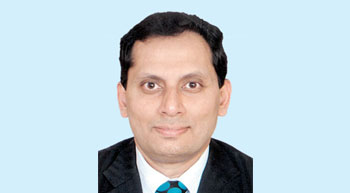Dr S Vasudevan, Director, Aerospace & Defence, KPMG Advisory Services Private Limited, shares his view on the scenario in aviation infrastructure in India and overseas with Janaki Krishnamoorthi.
What is the international scenario in airport infrastructure?
Reports indicate that worldwide more than 2000 airport projects are under development including several greenfield and brownfield projects. Many countries are increasingly involving the private sector in the development and modernisation of airport infrastructure. Brazil has awarded five airport concessions to private consortia in the last three years. The Saudi Arabian government awarded the Medina airport development and operations concession to TAV in 2012. A consortium led by Hochtief is involved in the construction of new airport terminals at Riyadh. Plans for development of a new international airport at Taif near Mecca on PPP basis is also underway. Zagreb airport in Croatia was offered on a 30-year development and operations concession to a consortium of Aeroports de Paris Management (ADPM) and TAV Airports. Airport PPP proposals in Serbia, Lithuania, Philippines, Vietnam and Japan are also in the pipeline.
What is the scenario in India?
India has been rebuilding its airport infrastructure over the last decade, largely through PPPs. Airports in Delhi, Mumbai, Bengaluru and Hyderabad have brought in private investments of more than Rs 30,000 crore and rank among the best in the world. Second airports in Mumbai and Goa are under development and new airports at Vizag, Dagadarthi, Nellore and Singrauli are being planned.
India´s air passenger traffic has seen significant growth in the last two years. Our airports handled more than 190 million passengers last year. India is expected to be the third largest civil aviation market in the world by 2020 after the United States and China. The new civil aviation policy to be announced soon is expected to pave the way for much anticipated reforms in airline licensing, airport privatisation, regulatory frameworks and regional aviation develop¡ment initiatives. Several state governments are also promoting the setting up of regional no-frills airports through renewed policies.
What is the status of several new airports which have been delayed. What are the reasons behind the delay?
The most anticipated airport is the Navi Mumbai International Airport (NMIA). The project which was delayed due to key approvals and land acquisition issues is now on track. The selection of the private joint venture partner is expected to be completed by March 2016. The transaction documents are expected to be issued to the four shortlisted bidders by end of 2015. The second airport at Mopa, Goa is also progressing with five bidders being shortlisted for the bid stage. Construction of a new airport in Kannur (Kerala) and new international terminal at Cochin airport are underway and the latter is expected to be commissioned in May 2016. Every new project proposal in India needs many statutory approvals by several state and Central government departments, before the project work can commence. Another key factor affecting the timely start of approved projects is land acquisition and related R&R issues. Unless project approval and development procedures are streamlined and a robust mechanism for determining compensation for land givers is enshrined as part of an ubiquitous law (notwithstanding the amended RFCTLARR-2015), projects may continue to suffer from time and cost over-runs.
How can the government attract more private investors?
There are several challenges that the government needs to address to sustain investors´ interest. Fuel taxes, airport royalties and taxes on MRO services have made the industry uncompetitive with respect to global aviation markets. Restrictive airline regulation and licensing policies such as the 5/20 rule are limiting the access of established Indian carriers to growing foreign markets besides creating unfair competition with their own peers in India. Lack of adequate vocational training institutes is constraining the supply of skilled manpower for meeting the growing demands of the sector.
Inconsistency in regulatory dispensations and uncertainty in guidelines related to tariff determination has also had a bearing on investor confidence. We need immediate reforms to make jet fuel prices comparable with international benchmarks, MRO services competitive through rationalisation of the tax structure, streamline the route dispersal guidelines to make it commercially viable and abolition of the 5/20 Rule.
(Views expressed in this interview are personal)



Leave a Reply
You must be logged in to post a comment.